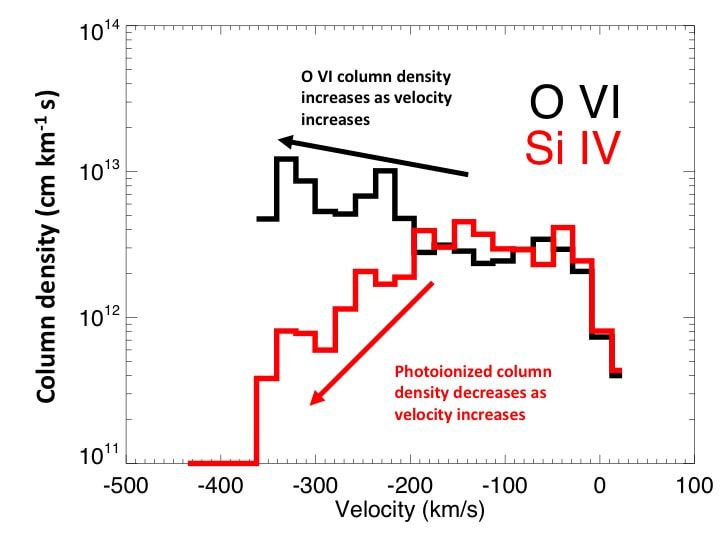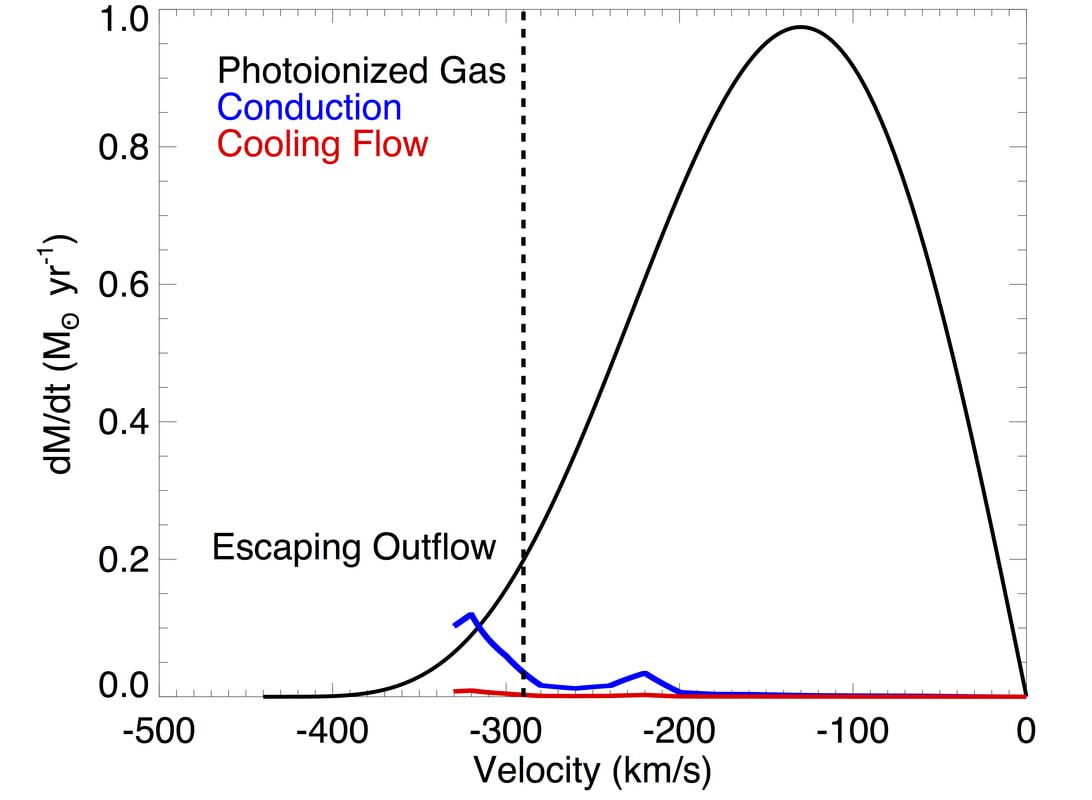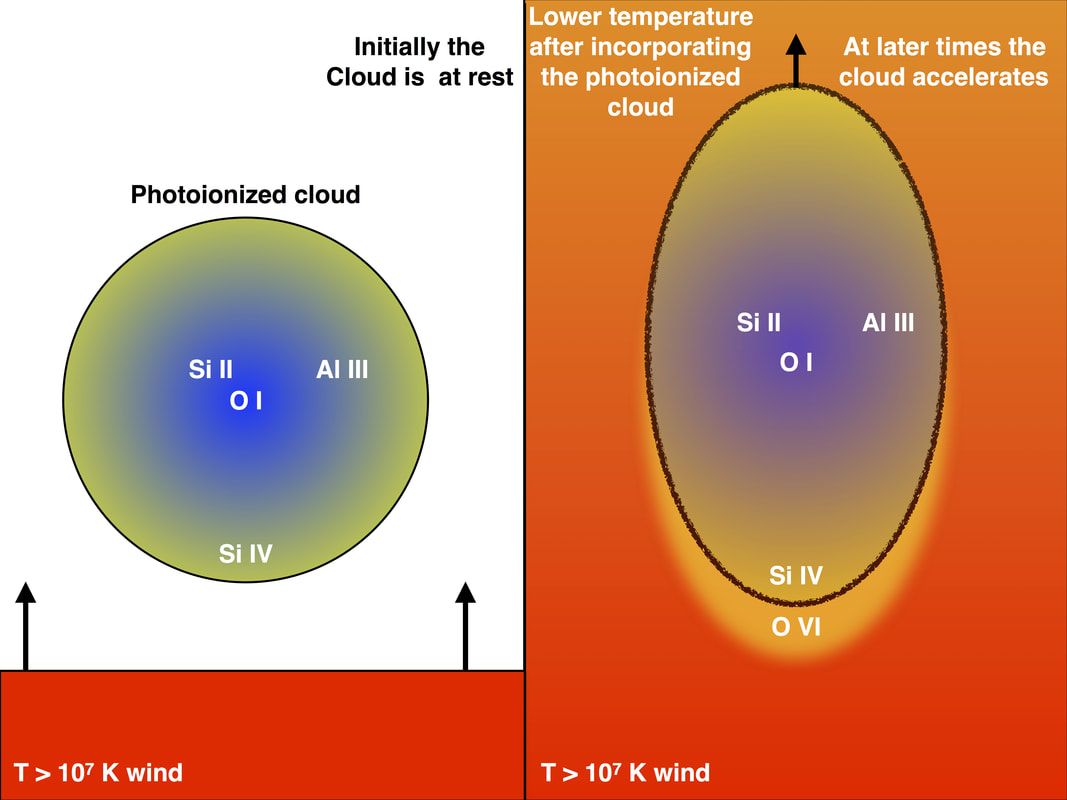Feeding the fire: Tracing the mass-loading of hot galactic outflows with O VI absorption
Gas within galactic outflows spans a large range of temperatures. For instance, observations show that the local starburst, M82, has outflowing molecular gas and hot X-ray emitting plasma, as well as warm photoionized gas. Further, previous observations suggest that gas can transfer between the different phases, implying that the outflowing mass is shifting phase structure at different times, locations and velocities. This changing phase structure makes it is very hard to quantify the total amount of gas that galactic outflows remove from galaxies.
As part of a recent paper, I used MEGASAURA spectra of a gravitationally lensed galaxy to quantify gas in two very distinct temperature ranges: warm photoionized gas and O VI (which traces gas transitioning between photoionized gas and hotter gas). The relationship between the two phases is surprising, and it may change how we picture galactic outflows.
As part of a recent paper, I used MEGASAURA spectra of a gravitationally lensed galaxy to quantify gas in two very distinct temperature ranges: warm photoionized gas and O VI (which traces gas transitioning between photoionized gas and hotter gas). The relationship between the two phases is surprising, and it may change how we picture galactic outflows.
O VI is created as Si IV is destroyedWhen I compared the column densities of the O VI and Si IV gas, I found that the O VI column density rises blueward of -200 km/s while the Si IV column density falls. The increasing column density explains why O VI becomes saturated beyond -200 km/s. This implies that O VI is created as the Si IV is destroyed.
This also suggests that the transitional and cool gas are distinct from each other. In fact, I showed that the ionization structure of cool gas is well described by photoionization models, but these models do not describe the O VI at all. Rather, the O VI is best described by models for a conductive interface between the photoionized gas and a hotter, unprobed, outflow. |



